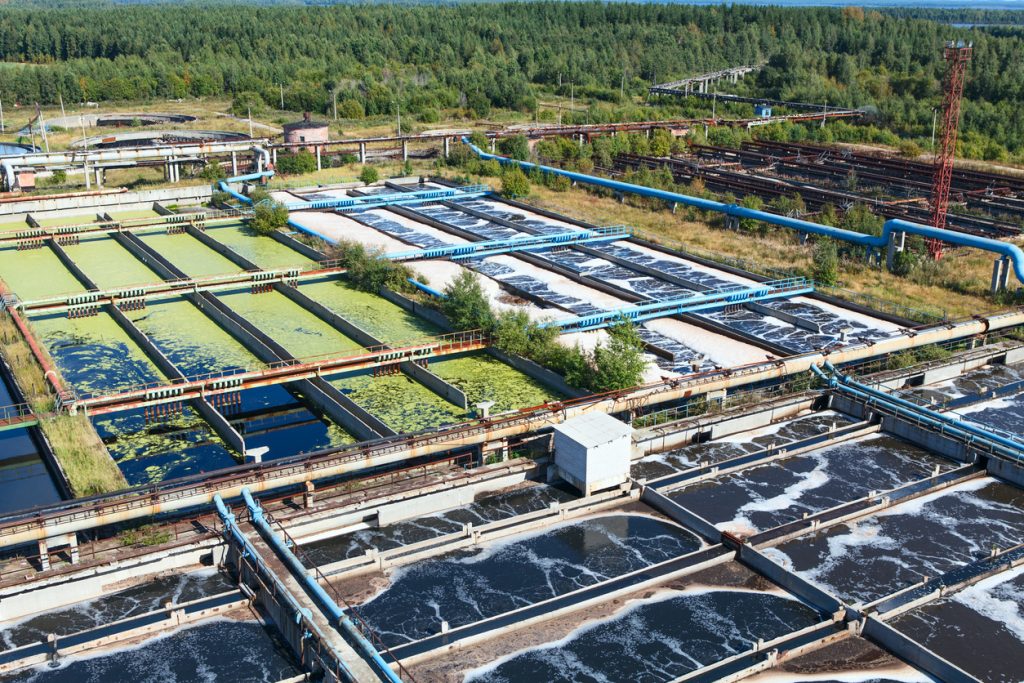Exploring the Function of Biotechnology in Waste Water Treatment
Exploring the Function of Biotechnology in Waste Water Treatment
Blog Article
Strategic Approaches to Boost Waste Water Therapy Performance and Reduce Ecological Effect
In the realm of waste water treatment, the quest for improved effectiveness and lowered environmental effect is a continuous difficulty that requires strategic services. The assimilation of innovative treatment modern technologies, energy-efficient procedures, source healing strategies, improved nutrient removal strategies, and smart surveillance and control systems stands for a multifaceted structure for dealing with these pressing problems.
Advanced Treatment Technologies
Cutting-edge membrane filtering systems have reinvented innovative wastewater therapy processes, considerably boosting the removal of pollutants. This modern technology has actually proven to be very effective in getting rid of a broad range of impurities, consisting of pharmaceuticals, heavy metals, and natural substances, which are typically challenging to remove through traditional therapy approaches.
In addition, membrane layer purification systems provide numerous benefits over conventional treatment methods. They need much less space, generate higher-quality effluent, and are extra resistant to changes in influent water quality. Furthermore, these systems are highly flexible and can be quickly incorporated into existing treatment plants or made use of as standalone units for decentralized applications. As the demand for clean water remains to climb, the adoption of advanced membrane purification innovations is essential to make certain sustainable and efficient wastewater treatment practices.
Energy-Efficient Processes
The integration of energy-efficient processes in wastewater therapy systems is vital for maximizing source application and reducing operational prices. One crucial method to boosting power effectiveness in wastewater therapy is the utilization of innovative aeration systems, such as great bubble diffusers or surface area aerators, which can enhance oxygen transfer efficiency and decrease power intake.
Additionally, maximizing procedure control and automation through the use of sophisticated sensing units and monitoring systems can improve general power efficiency by adjusting procedures in real-time based on real need and conditions. Applying power audits and on a regular basis keeping track of power performance signs are essential techniques to identify locations for improvement and track energy-saving efforts efficiently. On the whole, the fostering of energy-efficient procedures in wastewater therapy not only benefits the environment but additionally adds to lasting price financial savings and operational sustainability.
Resource Recovery Approaches
With a concentrate on enhancing source use and sustainability in wastewater therapy systems, the execution of resource healing strategies becomes an essential facet in enhancing operational performance. Source recovery approaches in wastewater therapy include the recognition and removal of useful resources from the waste stream, consequently transforming what was when thought about waste into a useful property. By executing source recuperation methods such as nutrient removal and recuperation, energy generation from natural issue, and the manufacturing of recyclable water, wastewater therapy plants can minimize ecological influence while optimizing efficiency.

Improved Nutrient Elimination Strategies
Implementing innovative nutrient elimination strategies is crucial for enhancing the efficiency of wastewater therapy systems. Improved nutrient removal plays a crucial role in decreasing the environmental impact of cured effluent released into water bodies. One of the crucial strategies utilized for improved nutrient removal is the process of biological nutrient removal (BNR), which entails the elimination of nitrogen and phosphorus via biological processes. This can be accomplished via the usage of specialized microbes that can convert nitrogen compounds right into inert nitrogen gas through denitrification, and build up phosphorus within their cells with a procedure called enhanced biological phosphorus elimination (EBPR)

Along with BNR, progressed treatment techniques such as membrane layer bioreactors (MBRs) and built marshes can additionally be employed to boost nutrient elimination effectiveness. MBRs make use of membranes to achieve high-quality effluent requirements by successfully getting rid of nutrients and suspended solids. Created wetlands simulate all-natural marsh processes to eliminate nutrients through plant uptake, microbial task, and sedimentation. By integrating these innovative nutrient removal methods right into wastewater treatment systems, towns and industries can efficiently reduce nutrient pollution and secure the atmosphere.
Smart Tracking and Control Systems
Making use of innovative modern technology, the assimilation of clever tracking and control systems changes the visit this site operational performance of wastewater treatment facilities. These systems integrate sophisticated sensing units and information analytics to continuously keep an eye on vital criteria such as pH degrees, turbidity, dissolved oxygen, and flow rates in real-time. By accumulating and evaluating this information, drivers can acquire beneficial understandings right into the efficiency of the treatment procedures, making it possible for positive adjustments to maximize therapy performance.
Smart tracking and control systems additionally support remote surveillance abilities, allowing operators to accessibility real-time data and control functions click this from off-site places. This remote availability enhances operational adaptability and responsiveness, enabling swift interventions in instance of system breakdowns or fluctuations in influent quality. The anticipating upkeep abilities of these systems aid avoid equipment failings and minimize downtime, eventually boosting the general dependability of wastewater therapy procedures.
Final Thought
Finally, calculated strategies such as advanced therapy technologies, energy-efficient procedures, resource recovery techniques, improved nutrient elimination strategies, and clever surveillance and control systems play an essential role in improving wastewater treatment efficiency and decreasing environmental influence. By implementing these techniques, wastewater treatment plants can enhance their general performance, reduce power intake, recuperate useful sources, and guarantee compliance with environmental guidelines. These strategies are important for effective and lasting wastewater administration methods.

In final thought, calculated approaches such as advanced therapy innovations, energy-efficient processes, resource recuperation methods, improved nutrient removal methods, and wise monitoring and control systems play an essential role in boosting wastewater therapy efficiency and reducing ecological effect.
Report this page